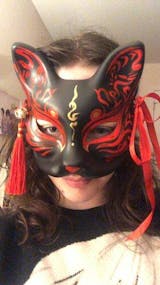I am not the type of person to write reviews but here it goes.
I really needed the clothes for an unexpected party but I chose the fast delivery option and I should say I’m impressed by their fast delivery. The product matches the pictures displayed and I’m impressed by the quality. Kudos to Eiyo Kimono.
What is the Difference Between a Japanese Kimono and a Yukata?

The traditional and culturally enriched dress of Japan has evolved over several generations into more comfortable garments. One of these garments is the yukata, a charming robe that incorporates the kimono's aesthetic. The kimono was the norm of Japanese fashion for several centuries up till the 1700s. It quickly became a symbol of class and status, and the colours and design of your kimono indicated how wealthy you were and from which region you belonged. However, the kimono has fallen out of fashion over the past few decades as it is costly and difficult to assemble. In its place, more casual variants are taking the place of Japans's traditional dress, and the Yukata is the most prominent of them all.
What Are The Origins of The Yukata?
A Yukata is an informal dress that is similar in design to the kimono. It is usually worn during the summer as it is made from a light, breathable fabric such as cotton or linen. The Japanese are known for their luxurious firework festivals in the summer. For these events, the Yukata is often the most worn dress among Japanese men and women. This informal dress was popular in Ancient Japan when people wore the Yukata to their baths when the Japanese had not yet invented bath towels. This is also the reason why the word Yukata means 'bathing cloth' in Japanese. People used this dress in the place of a bathrobe to go from one hot spring to another.
The hot spring bathing culture in Japan surely helped in enhancing the Yukata's popularity. Like the kimono, the Yukata is also crafted from one large piece of cloth, cut into several parts. This practice makes the garment look elegant and traditional, as it fits the shape of the wearer. The structure of a Yukata is very uncomplicated, and designers often focus on the patterns and colours since there is not much to do about the silhouette. The most interesting aspect about a Yukata is, therefore, its decoration. It is not common knowledge among visitors and tourists, but a Yukata does not always have to be informal and casual. It can be as extravagant as a kimono if you need to wear one at a formal event. Learn how to wear a Japanese kimono.
As is obvious from the Yukata's history, the garment was dyed by hand in ancient times though more conventional methods are adopted today. The most popular strategy for dyeing yukata clothing is through the method of Chusen. This practice is over three centuries old and involves using tengui towels that are native to Japan. The material used to stitch the Yukata is folded into the size and shape of a tengui. After this, dye is poured over the clothing, creating a sort of tie-dye pattern that is both beautiful and cultural in Japan's events. Designers also use stencil art to make abstract shapes and patterns over the kimono. In some cases, they may recreate images such as koi fish, cherry blossom flowers, or irises. It is important to dye the fabric inside-out and not let any part of the cloth stay plain unless part of the design.
How is a Yukata Different From a Kimono?
The kimono is an older, more historically significant dress to the Japanese. Yukatas are simply the offspring of the kimono dress and take vital inspiration from its design. The Yukata is also newer, so it tends towards being further customized and developed as Japanese fashion changes. Kimonos are more traditional than yukatas as well, with their expensive fabrics and regal designs. Putting together a simple kimono can be costly, while a normal yukata is bought for half the price. This difference comes from the varied materials used to stitch both dresses.
A kimono usually makes use of silk, even for the several inner layers of the garment. There are also two collars in a kimono, one of the plain robe worn underneath and the upper one attached to the actual kimono. Kimonos are popular among both men and women. Men's kimonos are also called 'Samurai', although there is no gender-specified term for yukatas. Kimonos are often reserved for very special occasions, such as government events or the New Year. They are also altered according to the season. The layers under a kimono are added or removed according to the weather. There is no such change in a yukata made specifically for the summer and remains unlined throughout the year.
A yukata is more popular among women and children, although men too like the garment in recent years. A yukata is plainer than a kimono in terms of design. This encourages wearers to try on accessories that look best with the garment. However, a kimono is an extravagant enough dress in itself that it needs little to no ornaments. Despite this, women will often wear bejewelled hair combs with their kimonos at special festivals. A kimono and Yukata are patterned similarly, with stencil art and ancient dyeing methods.
The Significance of The Yukata in Japan
Why do japanese wear yukata instead of a kimono? Despite their differences, the Yukata is just as culturally important to the Japanese as the kimono. As the Yukata is more popular among young women, the garment tends to be printed and designed with feminine art and colours. If you are looking to buy or rent a yukata in Japan, you might have to choose from brightly-coloured garments in red, purple, or yellow shades. The Yukata is an esteemed dress in Japan known to bring out the charm of a woman to its greatest extent, making her look twice as attractive. Yukatas are more comfortable than kimonos and also less costly to obtain, but their elegance and beauty are not diminished in the slightest. When wearing a yukata, a woman must walk with her back straight and take smaller steps. She should also not make any exaggerated hand motions as it draws attention away from the garment. These traditions should be honoured when wearing the Yukata.





